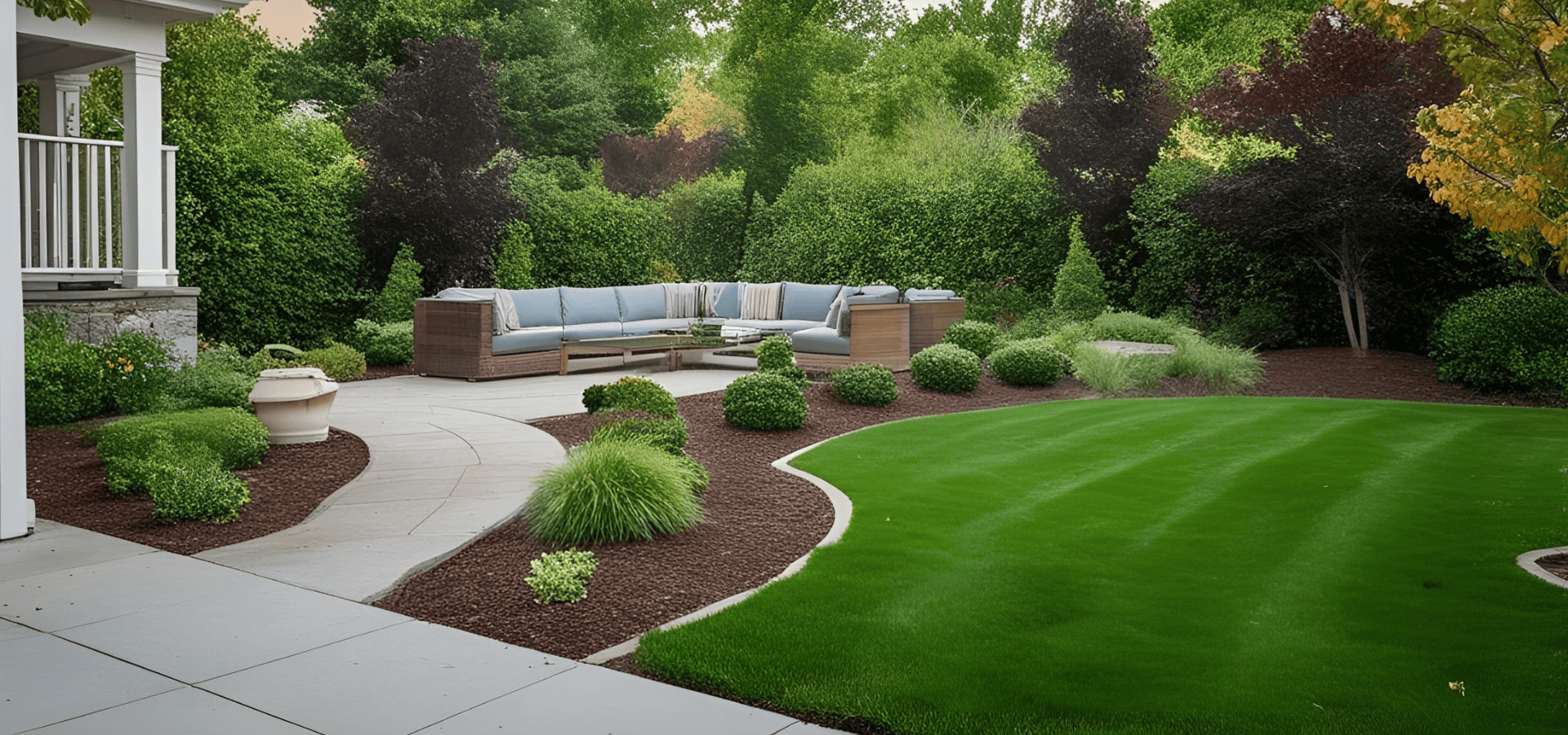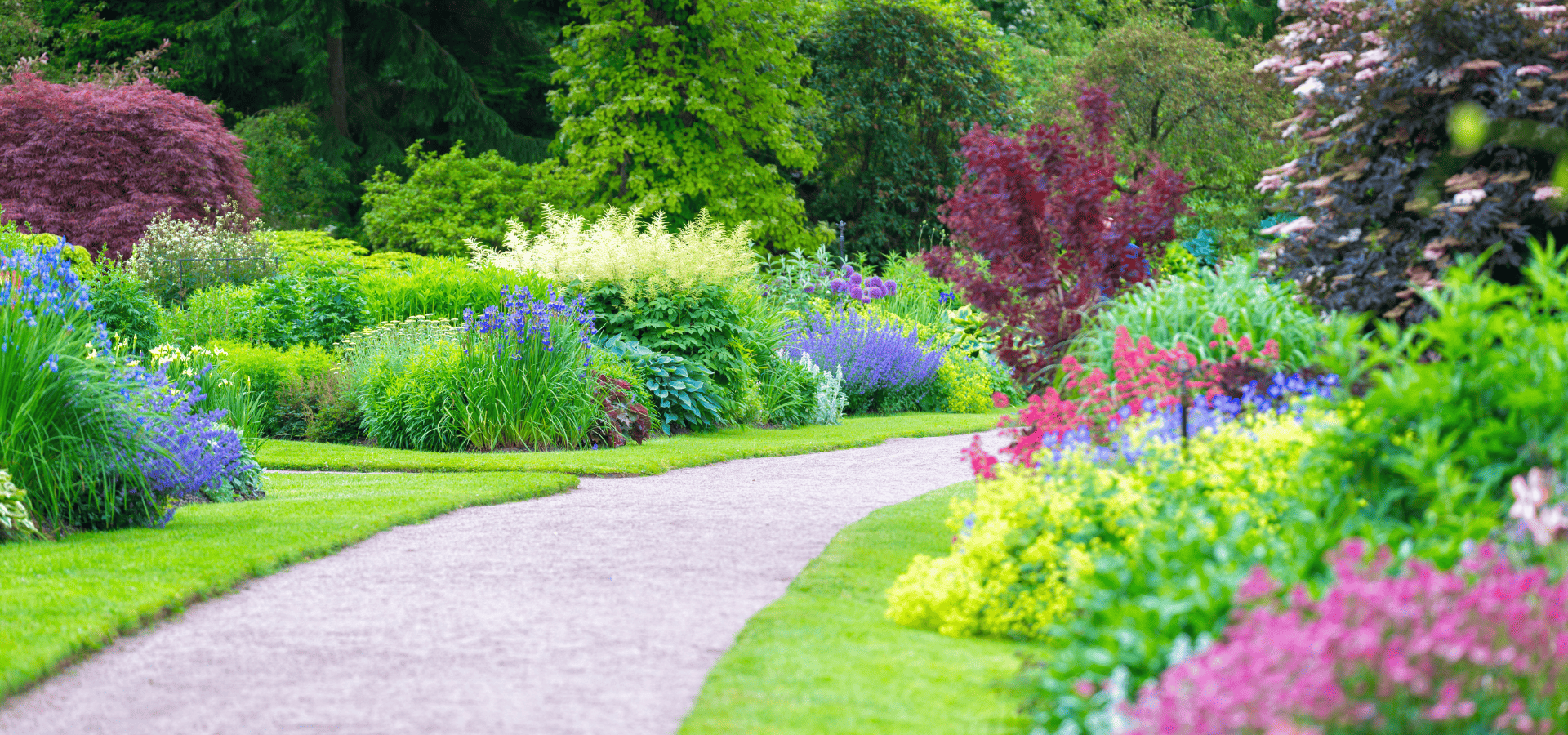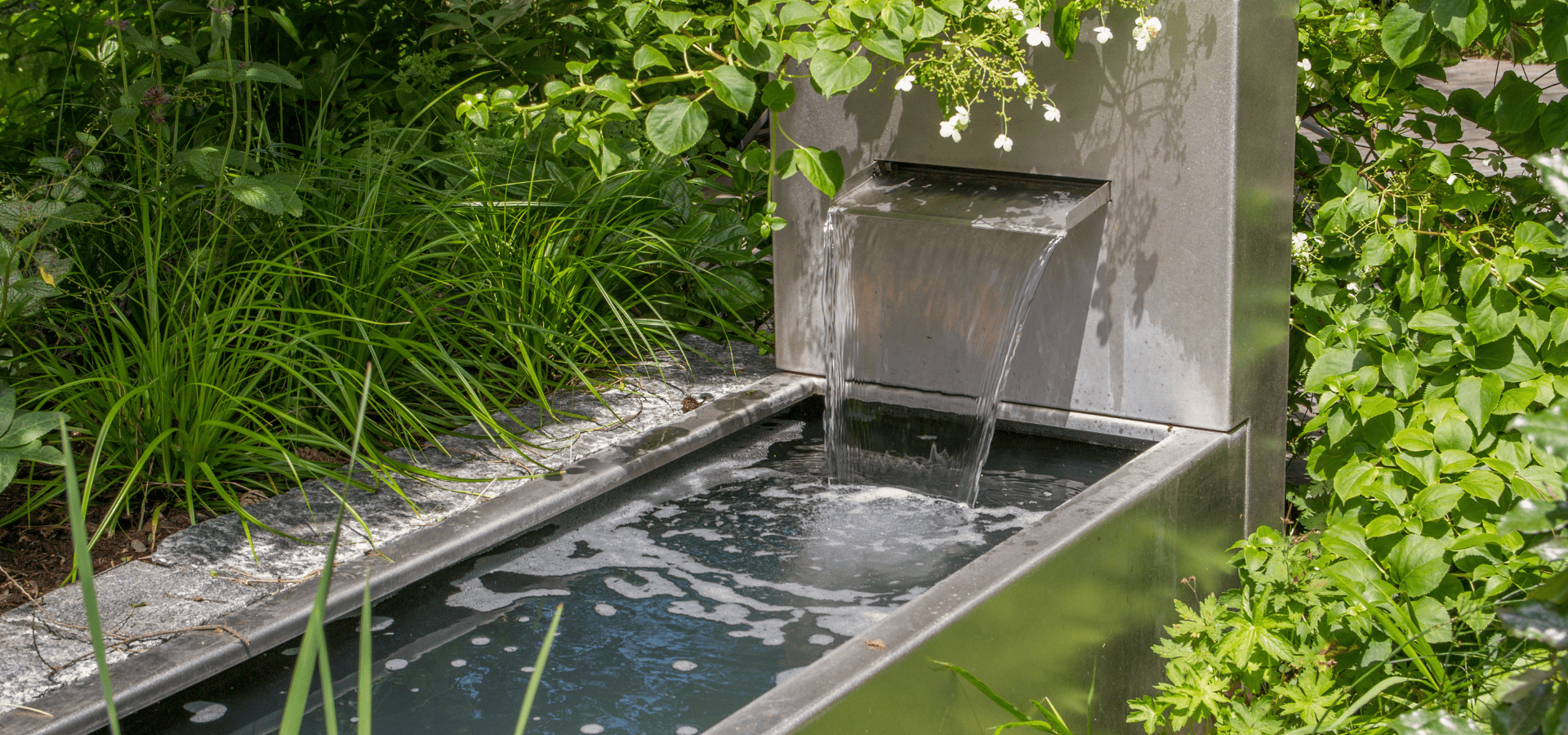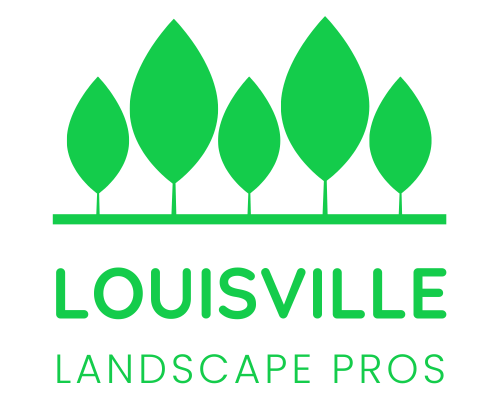Fire-Resistant Landscaping Guide
Wildfires have always been an issue, but in recent years, they have begun to happen more and more frequently. While you might believe the chances of it happening to you are low, it’s always better to be safe and sorry.
Fire-resistant landscaping slows the spread of wildfires and can significantly reduce any potential fire damage and the chances of fires reaching your home.
While fire-resistant landscaping won’t be able to fully stop wildfires, especially more serious ones, it will slow down the spread and intensity as it reaches your home, giving you crucial time to escape or for firefighters to arrive and do their work.
Even for urban homes, fire-resistant landscaping can lower the chances of accidental fires from loose embers or cigarette butts.
In short, fire-resistant landscaping significantly enhances your home’s fire safety, whether you’re living in an urban or rural area.
If you’re wondering how to do this, you’re in luck.
For those looking for a professional to help them out, our team of experts at Louisville Landscape Pros will be glad to help you out.
For those looking to perform the fire-resistant landscaping themselves though, in this article, we’re going to be covering exactly how to go about keeping your home protected from wildfires and regular fires.
Key Principles
First off, this article isn’t going to be exhaustive.
There’s going to be things that we don’t cover. But by knowing the key principles, you can apply them to come up with your own strategies to make your outdoor space fire-resistant.
1. Defensible Zones
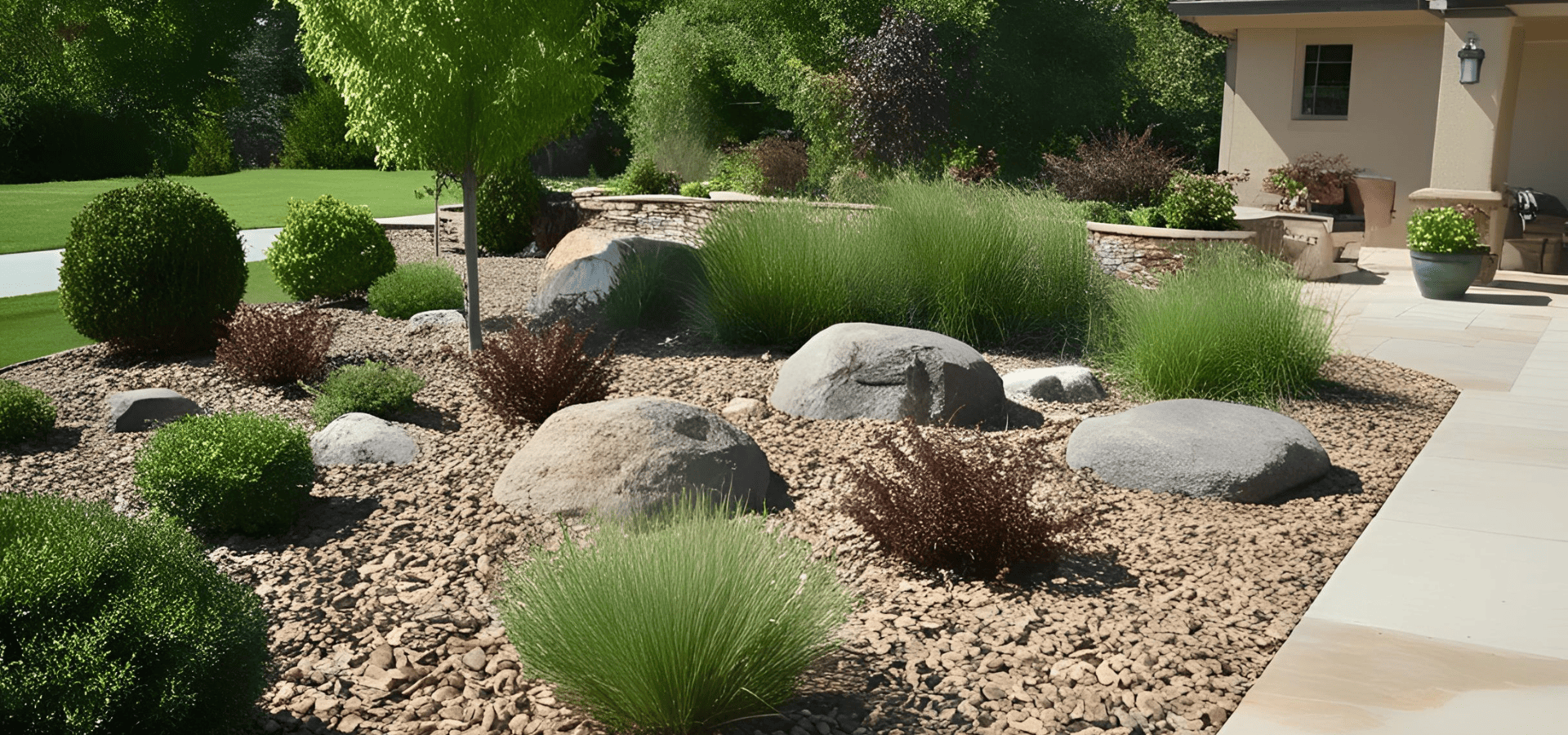
Defensible zones simply refers to any zone or area where you’ve specifically taken measures to control the spread of fire.
While ideally your entire outdoor space should contain no flammable materials at all, it’s hard to do that without sacrificing aesthetics.
As such, what’s usually done instead is that your outdoor space is divided into three different zones, starting with the closest one to your home to the furthest.
The closer the zone is to your home, the more resistant it should be to fire.
Starting with zone 1, the closest one to your home, this is your last defense. If your other two zones fail, this zone needs to have the highest chance of stopping the fire.
So for zone 1, there should be absolutely no flammable materials at all. Hardscapes made of non-flammable materials like stone are fine, but nothing like wood.
For plants, it’s actually best to not have any at all, but if you must, opt for low-growing plants so that there’s less fuel for the fire and when they do burn, they won’t travel upwards.
Zone 1 is usually the first 5 feet around your house.
Next, zone 2 is usually 5-30 feet from your home. While still trying to make it as resistant to fire as possible, you can ease up a little and include fire-resistant plants with high moisture contents.
Finally, zone 3 is anywhere above 30 feet. Here, you still don’t want to let up too much, but you have more freedom to include more plants and enhance your aesthetics more.
2. Fire-Resistant Materials & Plants
Fire-resistant landscaping depends heavily on fire-resistant materials and plants.
Of course, there are strategies like spacing your plants out and keeping them moist, but at its core, the most effective way to guard your home against fire is with fire-resistant plants and materials.
Basically, when you’re trying to create a fire-resistant outdoor space, you will need to plan the arrangement and maintenance properly, but the most important key is still fire-resistant materials and plants.
3. Emergency Access
Finally, the third key of fire-resistant landscaping is to ensure that you always have a way to escape quickly and for firefighters to do their job.
When fires do happen, if your fire-resistant landscape ends up blocking your exit route, then no matter how fire-resistant it is, it’s pointless. After all, the point of a fire-resistant landscape is to buy time for you to evacuate. If you can’t evacuate, it becomes pointless.
So these are the three keys of fire-resistant landscaping. There are other important factors of course, but these are the three most important ones. Now, let’s dive into how to carry out these three keys.
1. Fire-Resistant Plants
There aren’t any plants that are fire-proof or strictly non-flammable, but high moisture content, drought tolerance, and low oil levels will make your plant able to resist fire better, so those are the two key characteristics you’re going to want in your plants.
Drought tolerance may not directly correlate with fire resistance, but it helps a plant retain its fire resistance in dry conditions. Drought-resistant plants are better able to retain their moisture in dry climates, which means drought-resistant plants are fire-resistant even in dry climates.
Here are some fire-resistant plants for each plant type.
Trees
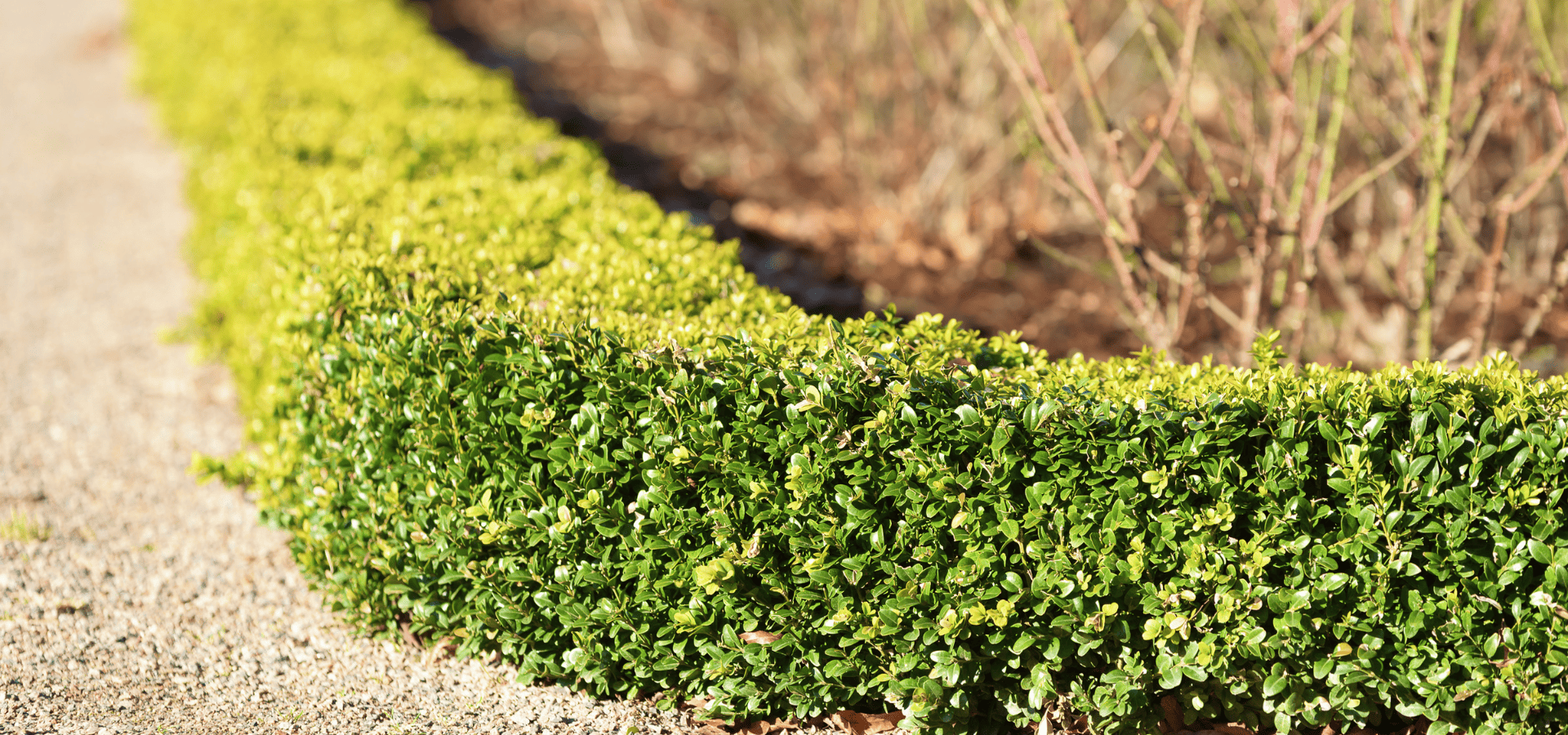
For trees that are low in oil, high in moisture, and drought-tolerant, there is:
- Honey Locust: The honey locust turns a beautiful shade of yellow in the fall.
- Olive Tree: Despite olive oil being extracted from olives, the tree itself is quite fire-resistant.
- Red Maple: The red maple tree is another tree that brings beautiful colors in autumn, mainly shades of red.
- Eastern Redbud: The eastern redbud blooms vibrantly in spring, bringing stunning shades of purple or pink to your garden.
Groundcovers & Shrubs
Now for the groundcovers:
- Creeping Thyme: Creeping thyme is a spring-blooming, low-growing groundcover that, like the eastern redbud, brings beautiful shades of pink or purple.
- Sedum: Sedums have unique, fleshy leaves that can store and retain lots of moisture.
- Creeping Jenny: The creeping jenny is a very low-growing groundcover that has a saggy appearance. Given how low it grows, it’s a great candidate for defensible zone 2 and even zone 1.
And for the shrubs:
- Boxwood: Boxwoods are commonly used for hedges, so if you’re thinking of having a fire-resistant hedge to block out fire, boxwood is a great candidate.
- Japanese Yew: Japanese yews are fire-resistant and able to grow in a wide range of climates and conditions.
- Spirea: Spirea shrubs bloom in the spring. Their appearance can be a little saggy, but their vibrant colors make up for it.
Flowers
Finally, for the flowers, here are our recommended plants:
- Penstemon: One of my personal favorites for fire-resistant landscaping, penstemon flowers have extremely vibrant, bold colors that breathe life into your garden from late spring to early summer.
- Verbena: Another one of my personal recommendations is verbena. Verbena flowers are also extremely bold and vibrant, and they usually bloom throughout summer, sometimes even into autumn.
- Salvia: Salvia flowers have unique long flowers that resemble spikes and will make a unique addition to your aesthetics.
2. Fire-Resistant Materials
For fire-resistant materials, many materials are actually fire-resistant. These include:
- Brick
- Concrete
- Metal
- Gravel
- Stone
- Ceramic
- Porcelain
Now for materials to avoid:
- Wood (duh)
- Untreated plastics
- Organic mulches
So generally, as long as you stay away from the obvious flammable materials, you will be quite safe.
Note that not all wood is automatically flammable. Wood can be treated to be largely non-flammable. However, even treated wood isn’t completely flame-proof.
If you must, opt for treated wood. But even then, non-flammable materials will be safer.
3. Fire-Resistant Hardscaping
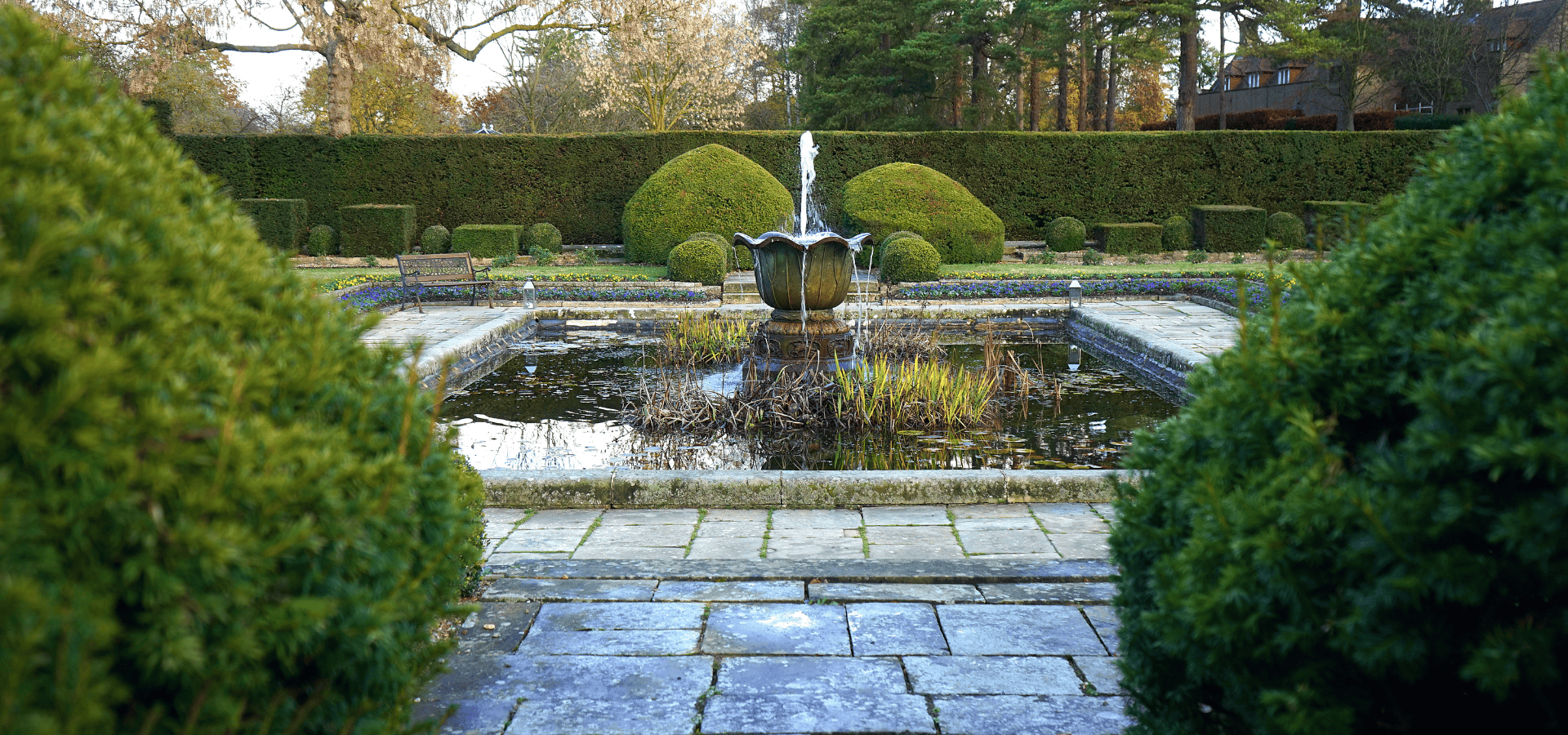
Besides just using fire-resistant materials, the features you use them for and their placements will also affect your home’s fire resistance.
Here are great fire-resistant hardscapes as well as where to place them.
Fencing
Fencing made with non-flammable materials will help keep fires out of your property.
When made with stronger materials like brick or stone, they can be very effective in keeping fires out as they’re not only non-flammable, but can withstand high heats without collapsing or breaking down.
Needless to say, the thicker the fence the better, though it may not always be viable due to aesthetic concerns.
Water Features
Water features, by nature of being water features, are extremely hard for fires to get past.
While they may not have any defined role in fire-resistant landscaping like acting as a barrier, it’s still good to have features that are pretty much flame-proof to slow the spread of fires.
Paths And Walkways
Non-flammable paths and walkways are also key elements in slowing down the spread of fire. Your garden may catch fire, but when the fire reaches your fire-resistant walkway, it will be unable to spread any further unless it’s fierce enough for the embers to jump over the path or walkway.
They essentially act as firebreaks to break up the spread of the fire.
Final Tips
So these are just a few strategies for fire-resistant landscaping. Again, this list definitely isn’t exhaustive, but will serve as a good starting point.
Whatever strategies you’re employing, always keep in mind that even for fire-resistant plants, they require sufficient water to remain fire-resistant.
As such, make sure to water them regularly and if you’re unable to keep up a consistent watering schedule, consider installing an irrigation system. Otherwise, you’ll be putting your home in a more vulnerable state against fire.
Another thing to note is that dead plants and debris catch fire easily, so no matter how well you’re able to fire-proof your space, you need to clear these up diligently and consistently.
Even the best fire-resistant landscapes require maintenance to keep them that way, so make sure not to neglect this part or it’ll diminish the effectiveness of your fire-resistant landscape.
You might also like
